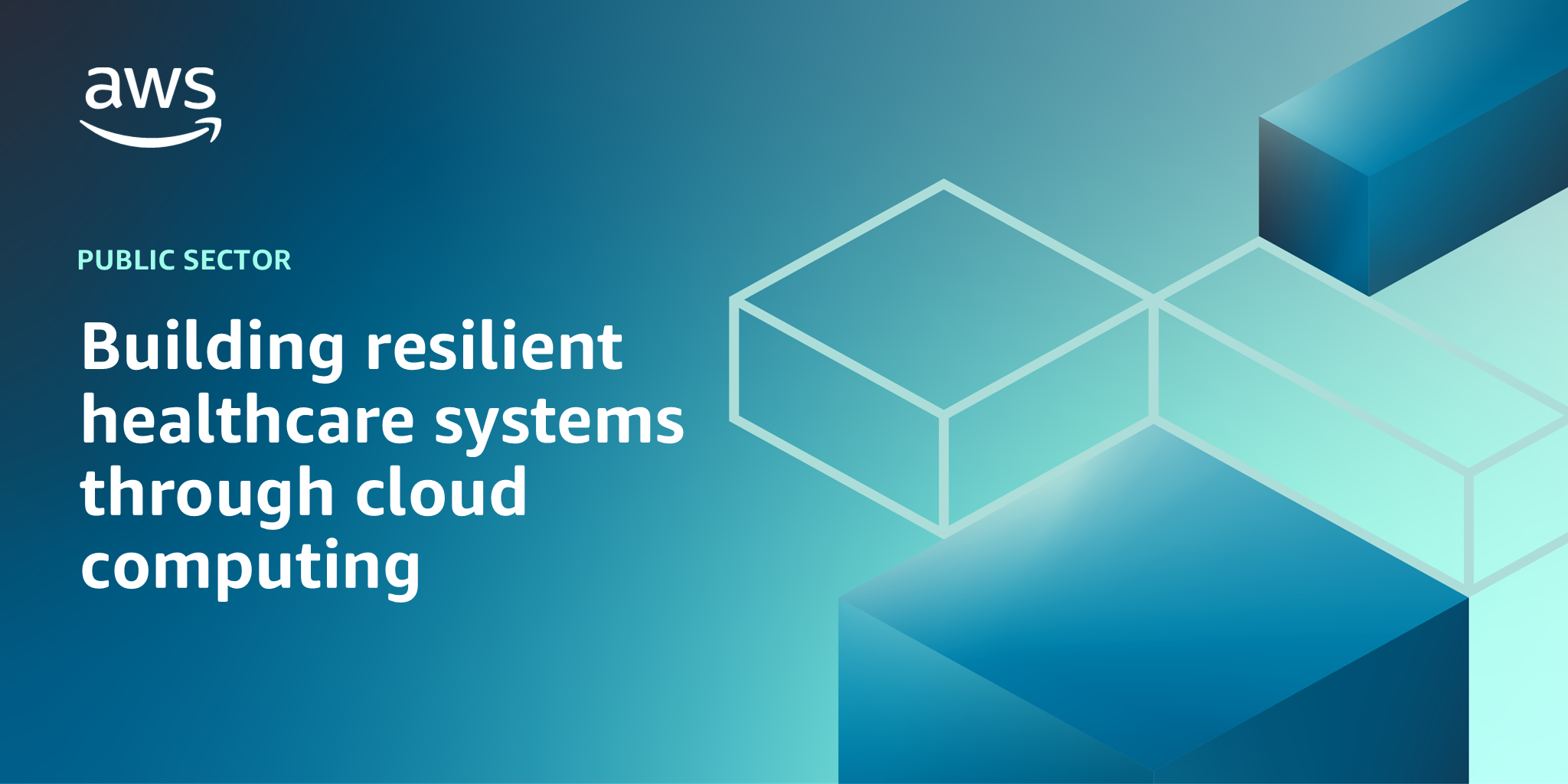AWS Public Sector Blog
Building resilient healthcare systems through cloud computing
Resilience of clinical and operational systems in healthcare isn’t merely a technical consideration—it’s a critical policy priority. As healthcare executives and policymakers, you understand that even brief disruptions to electronic health records or clinical systems can directly impact patient care and safety.
A newly released guide by Amazon Web Services (AWS) titled “Resilient Healthcare through Cloud: A Strategy and Policy Guide” provides a comprehensive framework for enhancing healthcare resilience through cloud computing while meeting regulatory requirements and improving patient outcomes.
Why cloud resilience matters in healthcare
Healthcare organizations operate in a unique environment where system reliability directly affects patient care. The digitization of health records, rise of telehealth, and integration of connected medical devices have created complex technology ecosystems requiring exceptional levels of system reliability and data protection.
Our guide introduces key resilience principles designed specifically for healthcare environments. These principles include automated recovery systems that monitor performance and trigger recovery processes when thresholds are breached, validated procedures that regularly test recovery processes to monitor effectiveness, and distributed architecture that implements horizontal scaling with multiple smaller resources instead of single points of failure.
The cloud advantage for healthcare
Cloud infrastructure provides healthcare organizations with resilience capabilities that would be difficult to achieve through traditional on-premises infrastructure. The AWS global infrastructure of Regions and Availability Zones enables healthcare organizations to distribute workloads across physically separated facilities while maintaining high-performance connections.
Real-world implementations demonstrate the significant advantages of cloud adoption in healthcare settings.
Tufts Medicine achieved a remarkable transformation by deploying their entire electronic health record environment on AWS infrastructure in just 14 months. This implementation included production systems, disaster recovery, and training components, making Tufts Medicine the first health system to implement a complete Epic environment on AWS. Through this migration, they successfully consolidated technology stacks, modernized applications, and delivered improved services for both patients and care providers.
Baptist Memorial Health Care (BMHC) faced the challenge of maintaining uninterrupted care for 3 million patients across three states in the mid-South. Working with AWS Partner Optimum Healthcare IT, BMHC migrated their electronic health records system to AWS to address limitations with their on-premises data center, including scalability issues and high maintenance costs. The migration yielded impressive results, with enhanced disaster recovery capabilities, a 20 percent improvement in system performance, and lower total cost of ownership across their network of 22 hospitals and more than 200 clinics.
NSW Health achieved remarkable improvements after moving to the AWS Cloud. Their Enterprise Patient Records application saw a tenfold improvement in performance and a 70 percent reduction in critical incidents, enabling faster access to clinical data for frontline clinicians. The organization can now implement enhancements to applications up to 50 percent faster, reducing environment launch times from 6-8 weeks to under four hours. The transition has already yielded USD $16 million in benefits through avoided costs, reduced capital expenditure, and productivity improvements, including 144,000 collective hours saved for frontline clinicians. Additionally, eHealth NSW leverages AWS Security Hub and Amazon GuardDuty for automated security checks and early threat detection, saving hundreds of hours annually on operational activities.
Building a resilience framework
The guide provides actionable insights for healthcare organizations seeking to enhance their resilience through cloud adoption. Organizations must understand their resilience requirements by identifying mission-critical workloads and establishing appropriate recovery objectives. They should implement the shared responsibility model by clearly defining responsibilities between their organization and AWS. It’s essential to design for availability by deploying critical applications across multiple availability zones. Organizations must develop comprehensive recovery strategies by defining clear Recovery Time Objectives (RTOs) and Recovery Point Objectives (RPOs). Finally, they should establish governance frameworks to maintain compliance with healthcare regulations while implementing cloud-based resilience.
Policy recommendations for healthcare leaders
For policymakers and governance leaders, our guide offers concrete recommendations to accelerate cloud adoption for enhanced healthcare resilience. Leaders should institute and promote cloud-first policies for new health data systems and establish financial incentives to encourage cloud migration. They should adopt international standards rather than creating bespoke requirements and support resilience assessment excellence through frameworks and benchmarks. Additionally, they should develop healthcare-specific cloud skills through workforce development programs and create regulatory sandboxes for testing innovative cloud-based solutions.
Ready to transform your healthcare organization’s resilience strategy? Download our full guide “Resilient Healthcare through Cloud: A Strategy and Policy Guide” to explore these concepts in depth and discover how AWS can support your journey to enhanced healthcare resilience. For more information or to discuss how AWS can help your specific healthcare organization, contact our team of experts today.
